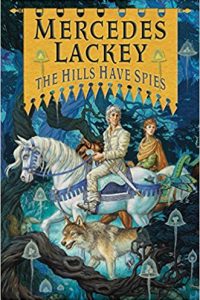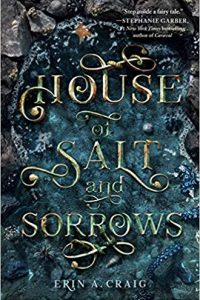Paul Di Filippo reviews Allen Steele
Avengers of the Moon, by Allen Steele (Tor 978-0-7653-8218-4, $26.99, 304pp, hardcover) April 2017)
 Of the reviving of old franchises there is no end. No pulp hero is ever truly dead. I suppose that their unkillable nature is what made them true pulp heroes to begin with. And although some revivals seem crass and merely mercenary, we have no complaints of that nature when the result is an authentic, heartfelt and evocative novel like Allen Steele’s newest.
Of the reviving of old franchises there is no end. No pulp hero is ever truly dead. I suppose that their unkillable nature is what made them true pulp heroes to begin with. And although some revivals seem crass and merely mercenary, we have no complaints of that nature when the result is an authentic, heartfelt and evocative novel like Allen Steele’s newest.
After being more or less defunct for decades, this seems to be Captain Future’s time to be reborn. The deluxe yet affordable omnibuses from Haffner Press deliver all the old-fashioned goodness of the series that initially flourished from 1940 to 1951, and which sparked up in reprints or refashionings at intervals thereafter. The Captain’s retro yet timeless virtues–both the hero’s personal creed and the narrative stylings–are arguably congruent with cultural trends today toward a desired and desirable return to basics and old verities with a useful revisioning. And this type of space opera is essentially an infinite canvas on which new adventures can be perpetually inscribed.
As for the choice of author to pick up the Captain’s tale–well, who else on the current scene might one nominate? It would have to be, I think, someone of a certain age. It’s not likely a Millennial writer would care for the job or bring the appropriate zest and fondness to the task. So that limits out choices. Mike Resnick or Stephen Baxter or Robert Sawyer or David Brin or Catherine Asaro or C. J. Cherryh would do a fine job. But not necessarily better than Steele’s loving performance. As he says in his afterword, his novel is “neither an homage to the Hamilton novels nor a parody, but rather an effort to bring Captain Future into the twenty-first century for a new generation of readers.”
I think Steele has succeeded wonderfully, while still retaining all the old virtues and attractions of the original property.
First off, the science and interworld logistics and realpolitik of his version of the old Planet Stories consensual future (every planet in our Solar System inhabitable, and productive of different races of mankind) is utterly believable and well-conceived. This is far from a Hard SF book, but nonetheless Steele takes the time to consider such matters as the terraforming of Mars and daily residential life on the Moon in substantial detail. Likewise, Steele provides us with a level of character development which, while not on the level of, say, a postmodern space opera by M. John Harrison, is still fully mature and of sufficient depth to endear the characters to us and make us enthusiastically savor their aspirations, their triumphs and defeats.
The primary beneficiary of this attention is of course Curt Newton, Captain Future himself. Steele wisely introduces Curt at the very start of his career, as a naive yet brilliant and brave twenty-something lad raised by his three oddball companions: Simon, a disembodied human brain housed in a drone; Otho, an android; and Grag, a sentient robot. The bonds among this quartet power the tale; family is the engine of their adventures. Then in comes the feisty Joan Randall, officer of the Interplanetary Police Force. Devoted to her corps, Joan crosses paths with Curt and crew and is swept up in their destiny, never to be the same. The seeds of romance between her and Curt are planted in this installment and sprout, while leaving many prospects ahead.
So then: good setting, good cast. What of the story itself? Steele has wisely kept the tale from becoming overcomplicated, hewing to a more-or-less straightforward revenge theme, while still providing generous subplots and larger avenues to propel subsequent developments. And the furniture of such tales is nicely arrayed. Extinct Martian volcanoes! Castaway in space! Biosphere-capped craters!
We begin with Curt’s desire for revenge on Victor Corvo, the sleazy politician who murdered Curt’s parents twenty years in the past. But this personal desire ensnares Curt in Corvo’s own schemes, leading the posse ultimately to Mars, where the sinister and secretive Ul Quorn, criminal and cult chieftain, awaits.
Steele keeps his chapters of modest length, his sentences graceful yet uncomplex, and while not every segment ends on a cliffhanger, there are still cliffhangers aplenty. But the pacing of this book is not feverish and the plot is not overstuffed, so there is room for contemplative moments.
One special feature that Steele has mastered is porting over the whimsical moments of the original books. I will affirm that it takes a rare talent to make a modern reader accept seriously and willingly a concept like “Eek the moonpuppy.” On a similar note, the superscience aspect of the old books are not scanted, but neither are they pushed beyond believability.
Blending melodrama with restraint, mixing tragedy and comedy, and hewing to tradition while simultaneously honoring contemporary tastes, this book deserves to find a big audience amongst old and young readers alike.
Finally, let me praise the really striking and distinctive cover art by Thomas Ed Walker. It evokes old-school sense-of-wonder magnificently.







